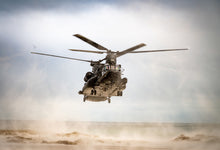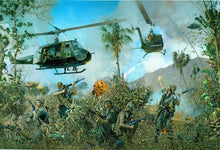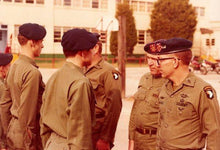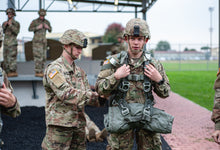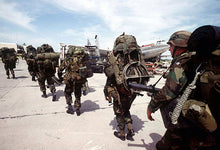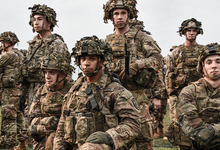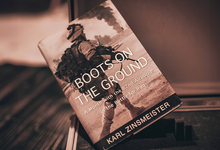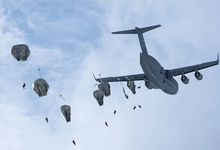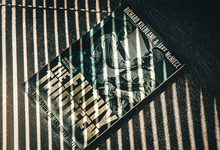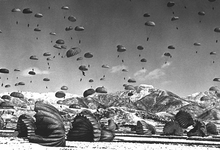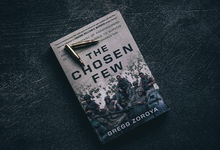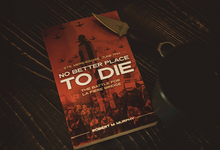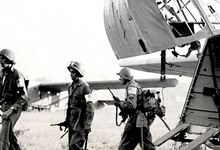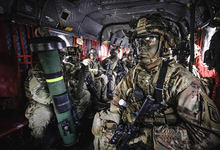“The Essentials” Series is a monthly blog strictly related to Airborne culture. We target fundamental topics such as Airborne equipment, culture, traditions, trivia, and much more.
While we have a semi-annual plan on the topics, we remain open to ideas from paratroopers like yourself. So, feel free to reach out and propose a topic, our staff writers will get in touch with you, and you might even end up writing it together!
“The Essentials” Article One: U.S. Army’s Parachutist Badges
U.S. Army Airborne units are considered some of the most versatile and disciplined units in the service. Its paratroopers have created distinct traditions and are proud of their heritage. While their traditions might not be as old as others, they stand out from the rest and have formalized their distinguishable badges and devices. These military badges, a.k.a. "Jump Wings," differ in levels and may be complemented by achievements such as combat jumps. If you're an Airborne stud, you probably know these elements by heart, but these might be pretty new and interesting to some of you.
So, grab a cup of beer or coffee and let us get learning.
The Classification of Army’s Parachutist Badges
The Army’s Basic Parachutist Badge is presented to U.S. and foreign military personnel of any service who successfully completes the U.S. Army's Basic Airborne Course. The course is a three-week program split into three phases: ground, tower and jump week. The course is usually run in Fort Benning, Georgia and the pinning of the wings in the ceremony means that the individual soldier has completed the course and conducted at least (5) completed jumps and thus is qualified to participate in airborne operations. The graduates are formally recognized as trained military Parachutists who have met all the necessary requirements.
The parachute device consists of the open parachute, which symbolizes individual proficiency, and the wings in the badge, which represent flight; together, they represent a qualified parachutist ready for action!
From Senior to Master – Above the Sky
The following two items on our list, The Senior and the Master Parachutist Badge require that all individuals, to be considered, must be rated excellent in character and efficiency, in addition to numerous other requirements. Again, this shows how stringent Airborne is about its badges and speaks highly of its eminent community.
The Senior Parachuting Badge is the next level of airborne paratroopers with specific achievements and experience. The candidate must have served on jump status with an airborne unit or authorized airborne organization for at least 24 months and have graduated from the Jumpmaster Course. To be awarded this distinguished badge, military personnel must have conducted a minimum of 30 jumps (15 must have been completed with combat equipment) and at least two-night exits, one of which must have been as a jumpmaster of a stick. An additional requirement is two mass tactical jumps resulting in an airborne problem. The badge contains a five-pointed star on top of the parachute to mark its notability. So, please start thinking about getting yours now. You know you want it! If you've already got the badge, make sure you ‘Bragg’ about it!
The upper echelon of this prestigious category is the Master Parachutist Badge which obviously has a long list of requirements. To be awarded the 'Master' a parachutist must have participated in 65 jumps, including 25 jumps while carrying combat equipment. Four of these jumps must have occurred at night, and the parachutist must have been a jumpmaster of a stick. Five of these must have been mass tactical jumps culminating in an airborne assault problem with a battalion or larger unit or a separate battery/company organic staff of a regiment or larger-sized unit. Similarly to the Senior Badge, the requirement of graduation from the Jumpmaster Course also applies. The condition is to serve in organization-authorized parachutists or an airborne unit for at least 3 years.
The Silver Wreath around the five-pointed start of the Parachute Device distinguishes the badge. When worn around airborne and military environments, the Badge gets instant notability and respect because it deserves it!
Did you know?!
In 1941, Major William M. Miley, commander of the 501st Parachute Battalion, got in touch with the Heraldry Branch from the Office of the Quartermaster General to adopt a badge to distinguish paratroopers who had completed jump training. Unhappy with the proposals, he appointed and authorized Captain William P. Yarborough to go to Washington and make the required changes.
Captain Yarborough finally designed a sketch to make all sides happy, then went through the whole process of physically handling the process, all by himself, from production design to the approval by the War Department. Finally, on March 10th, 1941, the Parachutist Badge was approved for official wear in U.S. Army uniforms, of course, upon completing the necessary requirements.
Photo Courtesy John Yountz






